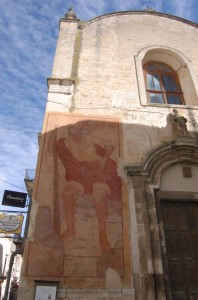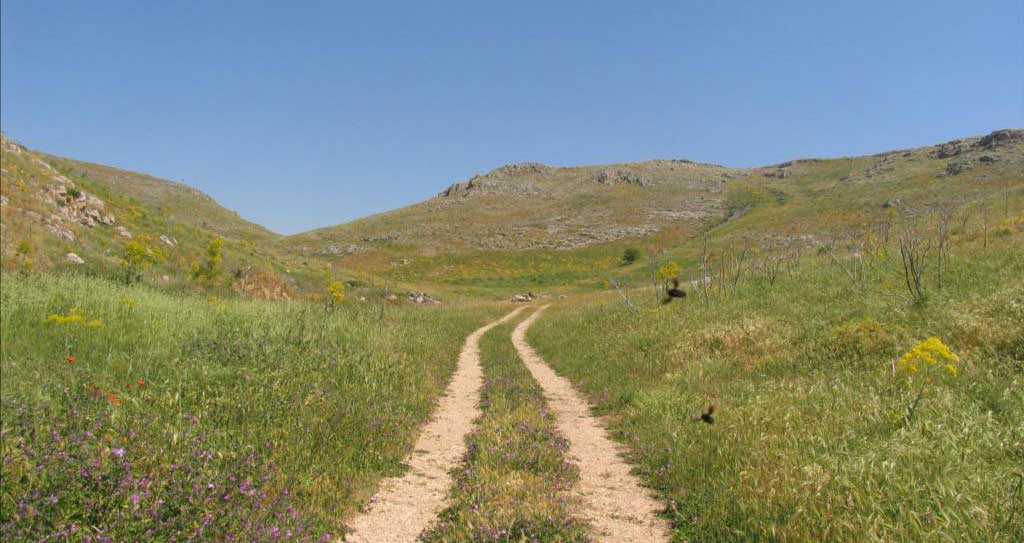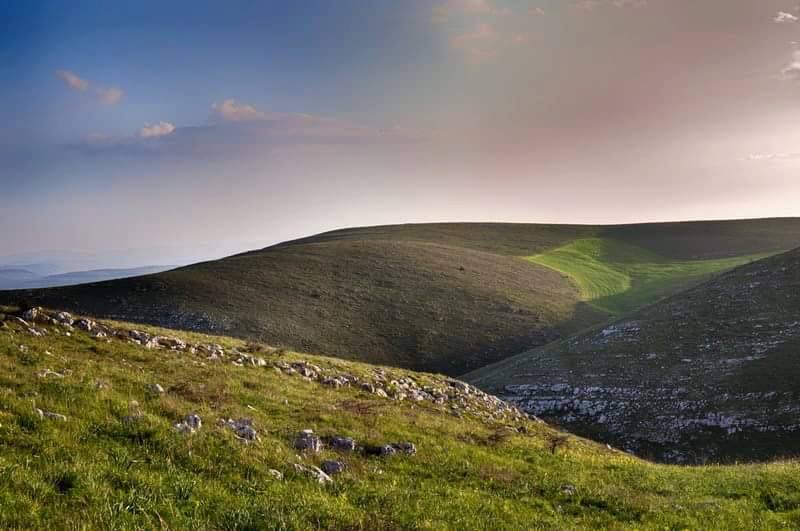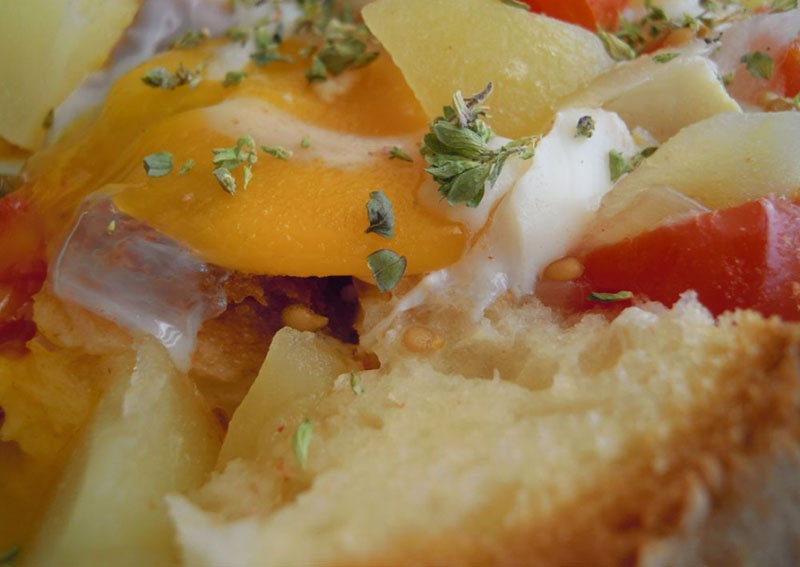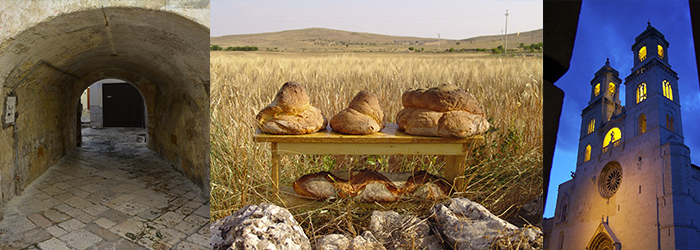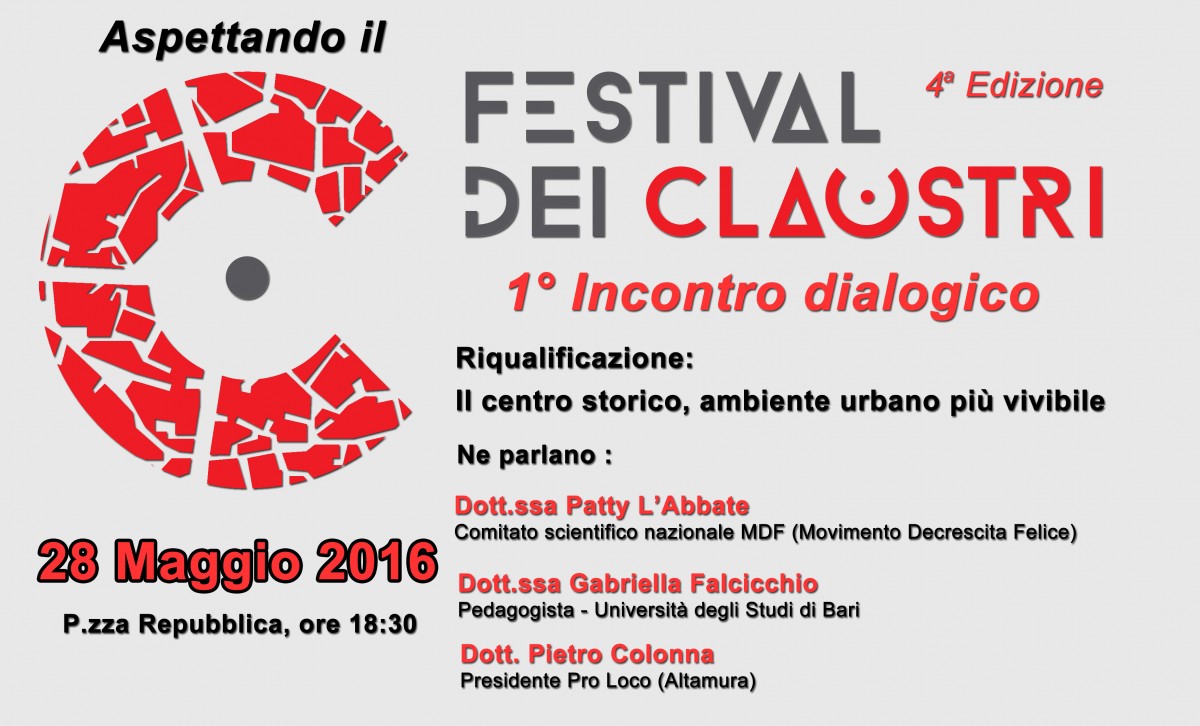THE MEGALITHIC WALLS
 Testimony to the kind of the classical age fortification (V-IV century BC.), Also spread to other centers of Peucezia, the megalithic walls of Altamura are presented as a double circuit: an inner city wall, smaller, which enclosed the acropolis, with a development of about 1500 meters, and an outer one, larger, which stretched to 3,600 meters. To be understood as work made necessary by the specific situation in which the indigenous people of the whole Peucezia found themselves having to face the expansionist aims of Taranto and neighboring Lucan and Samnite centers, the megalithic walls are of great importance from the civil and military point of view.
Testimony to the kind of the classical age fortification (V-IV century BC.), Also spread to other centers of Peucezia, the megalithic walls of Altamura are presented as a double circuit: an inner city wall, smaller, which enclosed the acropolis, with a development of about 1500 meters, and an outer one, larger, which stretched to 3,600 meters. To be understood as work made necessary by the specific situation in which the indigenous people of the whole Peucezia found themselves having to face the expansionist aims of Taranto and neighboring Lucan and Samnite centers, the megalithic walls are of great importance from the civil and military point of view.
The construction technique used involves the use of large blocks (the term “megalithic” derives, in fact, from the Greek: mega, large, and lithos, stone), roughly hewn, arranged as interlocking with each other, then seated dry. The walls had a width of 5.5 meters and a height of more than 4 meters. The wall consists of two facings, one external and the other internal, in the central part of which, the emplecton, is a compound of earth and stones. The walls had to be open at various points of the roads leading to the nearby centers; the only well preserved today is Porta Alba or Aurea, to which a trapezoidal tower is flanked in its internal area. In correspondence with this door a true and genuine necropolis was found with shaft-and-chamber tombs that can be dated – according to the outfits tombs unearthed in the excavations by Ponzetti (mid-twentieth century) – to the sixth and fifth centuries BC, so preexisting compared to the erection of the wall itself. The currently preserved part of the whole city walls, therefore still visible, is approximately 1800 meters.
MERCADANTE THEATRE
 Built in 1895, one hundred years after the birth of the composer Saverio Mercadante. Completed in just seven months thanks to the project of Vincenzo Striccoli from Altamura, it was recently restored thanks to the intervention of the Teatro Mercadante Co.Ltd. which reported it the former splendor. The main entrance of the theater, on Piazza Saverio Mercadante, leads into the vestibule which houses the bust of the Altamura musician made in 1844 by sculptor Angelini. Beyond the relief corridor you have access to the stalls, which are in the shape of a horseshoe, with 190 seats. Above this first row there are two tiers of boxes and the gallery (the “dove house”). Overall, the room has 60 boxes: 18 in the first row, 21 in second and third row. The gallery, in the shape of an amphitheater, had a capacity of about 300 seats.
Built in 1895, one hundred years after the birth of the composer Saverio Mercadante. Completed in just seven months thanks to the project of Vincenzo Striccoli from Altamura, it was recently restored thanks to the intervention of the Teatro Mercadante Co.Ltd. which reported it the former splendor. The main entrance of the theater, on Piazza Saverio Mercadante, leads into the vestibule which houses the bust of the Altamura musician made in 1844 by sculptor Angelini. Beyond the relief corridor you have access to the stalls, which are in the shape of a horseshoe, with 190 seats. Above this first row there are two tiers of boxes and the gallery (the “dove house”). Overall, the room has 60 boxes: 18 in the first row, 21 in second and third row. The gallery, in the shape of an amphitheater, had a capacity of about 300 seats.
The decoration of the boxes shelves of the 2nd and 3rd order and the parapet of the gallery, with festoons and masks, was entrusted to the Altamura painter Pasquale Rossi, who, like the engineer Striccoli, lent his work free of charge. The stage measuring 9.50 × 10 m and has a proscenium of 3 m. The proscenium arch is topped by a medallion with a portrait of Mercadante painted by Pasquale Rossi (a student of the Altamura Francesco Lorusso and, first, of the Neapolitan Domenico Morelli). The curtain, made in 1856 by Montagano (representing Frederick II of Swabia who participates in the works for the construction of Altamura Cathedral), appeared smaller than the size of the proscenium of the new theater, so Rossi painted in addition, on the right, a group of warriors.
SAN MICHELE DELLE GROTTE
 It is a rock settlement located to the north, outside the old town centre and now incorporated into the urban fabric. Formerly known as “Sant’Angelo della Rizza”, it is one of the most interesting hypogean environments of the city, due to the structural system and the existing wall paintings.
It is a rock settlement located to the north, outside the old town centre and now incorporated into the urban fabric. Formerly known as “Sant’Angelo della Rizza”, it is one of the most interesting hypogean environments of the city, due to the structural system and the existing wall paintings.
Its construction probably dates back to the tenth century, built as a hermit foundation of the monks of St. Basil, whose presence on the territory Altamura is attested in numerous rock churches (see the crypts of Iesce, San Giorgio, in Fornello area). The brickwork facade has, above the entrance portal, a sixteenth century niche decorated with Corinthian capitals, where the stone statue of St. Michael the Archangel is kept, a work, with a clear late -Renaissance setting, made at the end of the XVI century. The interior, entirely dug into the tufa, consists of low vaults, supported by five pillars that divide the church into four aisles, and it is embellished with a tiled floor made in Laterza in 1690. Despite originally presenting itself entirely painted, the crypt still preserves frescoes worthy of note, including, on the first pillar on the left, the image of half- bust Saint Lucia whose predominant stylistic character dates her back to the fourteenth century, and, in the next column, the coeval Saint Nicola dei Greci, by the hallowed headwith with a solemn face and blessing pose. On the backdrop of the first right nave a font embedded in the wall is found, framed with decorations in racemes of the eighteenth century and topped by a scroll, whose recording recalls the link at one time existing with the michaelico sanctuary of Gargano.The second right aisle ends with the baroque altar in polychrome stone dedicated to the eponymous saint of the church, whose seventeenth-century effigy of Saints Lorenzo and Leonardo is clearly visible in the upper register. Along the side walls you can find, instead, the images of Tobias and the Angel Gabriel to the left, and those of St. Dionysius the Areopagite on the right, dating back to a time between the end ofthe sixteenth and the beginning of the seventeenth between. It follows the main altar in tuff, whose frontal is centrally surmounted by a radiate cross and it is flanked by large spiral scrolls. In the above apse the painting of the Deesis is remarkable, in which the image of the blessing Christ flanked by the Virgin and St. John the Baptist predominates, made by anonymous fresco artist in the first decades of 1300. Finally, the first left aisle also ends with a fine Baroque stone altar, on which in a raised perspective the statue of Saint Lucia was placed, now preserved at the museum of ABMC in Altamura.



